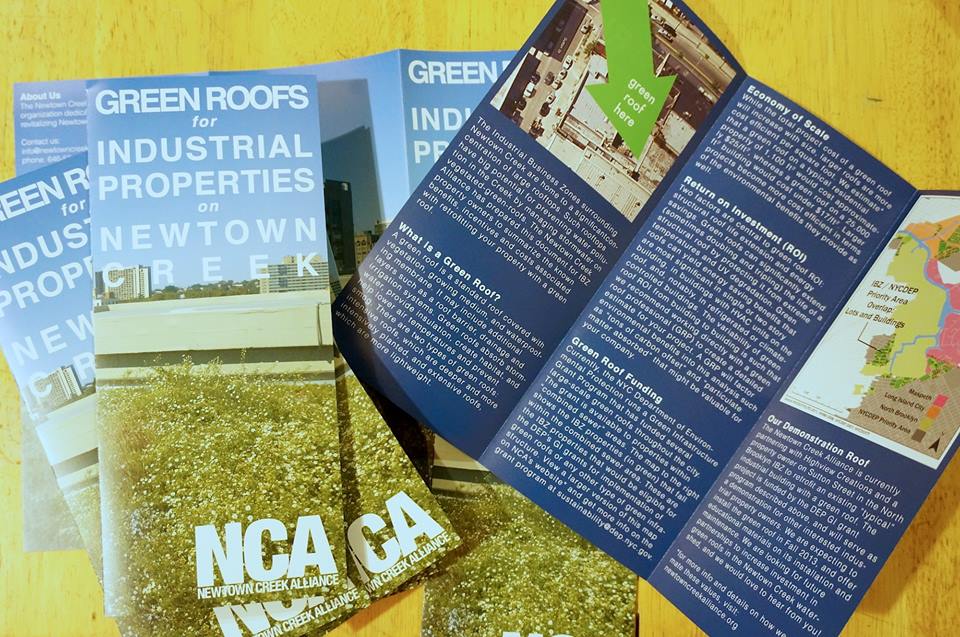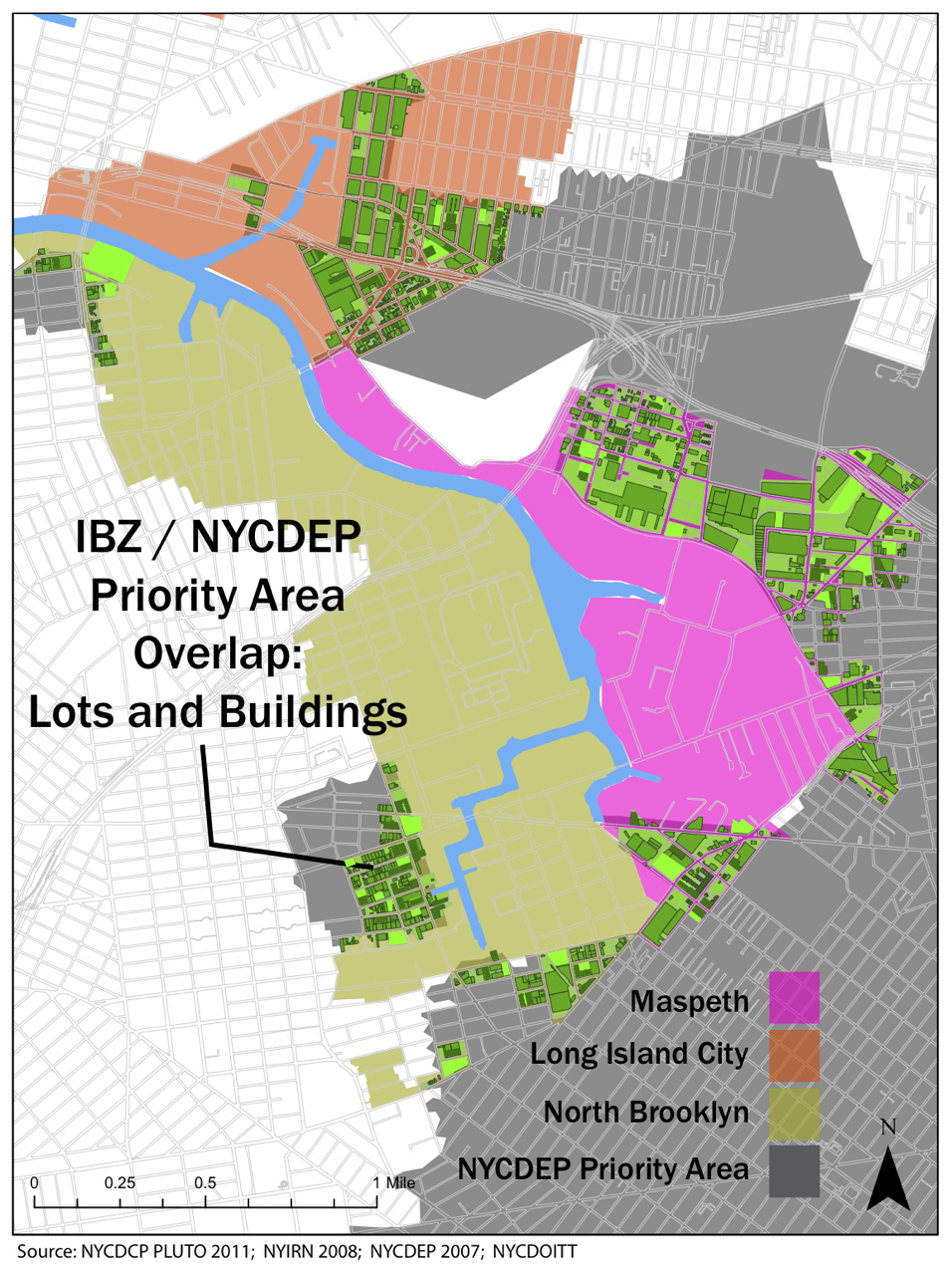Green Roofs for the Newtown Creek Watershed

What is a Green Roof?
A green roof is a standard roof covered with vegetation, growing medium, and waterproofing membrane. It may include additional layers such as a root barrier, drainage and irrigation systems. Green roofs absorb stormwater, provide insulation, create habitat, and help lower air temperatures and prevent smog. There are two types of green roofs: intensive roofs, which are deeper and more intensively planted, and extensive roofs, which are more lightweight. For more info watch this video below:
Getting to Yes
One main obstacle to implementing a green roof is the upfront financial hurdle. Green roofs cost money and do not generate immediate returns to the property owner, like say, solar panels. However, there are several factors that influence cost and payback period, or “return on investment”, and in some cases a green roof can pay for itself within a reasonable amount of time.
Economy of Scale
While the total project cost of a green roof will increase with size, larger roofs are more cost efficient per square foot. We estimate that a green roof on a typical residential property of 1,100 sq ft would cost approximately $25/sq ft, whereas a green roof on a 25,000 sq ft building would cost under $17/sq ft. Larger projects become more cost efficient in terms of the environmental benefits they provide as well.
Return on Investment (ROI)
Two factors are central to green roof ROI: structural roof life extension and energy savings. Green roofs can significantly extend (sometimes doubling and tripling) the life of a structural roof by protecting it from extreme temperatures and UV degradation. Green roofs can yield energy saving benefits that are most significant in single or two story building, in buildings with HVAC units on the roof, and, notably, in refrigerated or climate-controlled buildings. The variability of green roof ROI from building to building is such that we recommend working directly with a green roof professional (GRP) to create a detailed estimate for any project. A GRP will factor environmental benefits into this analysis such as “tons of carbon offset” and “particulate matter absorbed” that might be of value.
Green Roof Funding
Currently, the NYC Department of Environmental Protection runs a Green Infrastructure Grant Program that has funded several large-scale green roofs throughout the city. The grant is available to properties within “combined sewer” areas. The map below shows the large IBZ properties (in green) that fall within the combined sewer area. These are the IBZ properties that would be eligible for the DEP’s GI grants for implementation of green roofs or any other type of green infrastructure.
Green Roof Tax Amendment
Until March of 2013, NYC had a $4.50/sq ft Green Roof Tax Abatement (GRTA) available for property owners who installed green roofs anywhere in the five boroughs, regardless of whether they were in a combined sewer area or not. Unfortunately, this tax abatement was not accessed by many property owners, mainly because its did not pay for itself on small to medium projects. The cost of obtaining the tax abatement often exceeded the actual amount of the abatement.
Earlier this year, the tax abatement was slightly improved, and renewed. This 2.0 version of the GRTA, still pending final touches, includes several elements that will hopefully make it more useful for large industrial properties:
+ The credit will be increased from $4.50/sq ft to $5.23/sq ft.
+ The value cap will be increased from $100K to $200K to capture larger roofs.
+ A dedicated staff person at DEP will act as a liaison between the applicant and DOB, provide educational materials, and provide technical assistance.
+ We estimate that roofs of approximately 40K sq ft will capture the maximum tax credit.
The city’s website for the GRTA is here!
Summary
With existing and improved incentives on the horizon for green roofs, NCA is optimistic that increased investment is coming to rooftops in the IBZs of our watershed. We will continue to expand the content here as our analysis continues, and please reach out to us at info@newtowncreekalliance.org if you would like more details (assumptions were made!) about any of the info here. Thank you to Rob Crauderueff for his work on the energy efficiency and GRTA analysis, and Fred Wolf for mapping.


